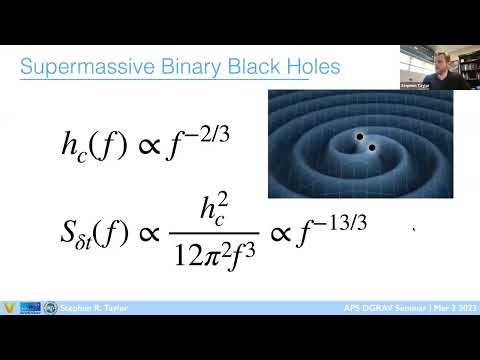Description:
Explore a comprehensive seminar on the emerging field of Pulsar Timing Array Gravitational-wave Astronomy. Delve into the fundamentals of pulsars, pulsar timing arrays, and the Helens Bounce Curve. Examine the history of pulsar limits, detection methods, and common spectrum processes. Investigate background issues, cross correlations, and the road ahead for this exciting area of research. Learn about spectral characterization, directional power, continuous wave signals, and Bayesian limits. Discover the multimessenger approach and other potential sources of gravitational waves. Gain insights into detection prospects, the expected timeline for robust detection, and the nature of the gravitational wave background. Analyze the spectrum and limitations of power law models, and explore methods for constraining isotropy. Understand decision thresholds, signal-to-noise ratios, and their evolution. Engage with experts Prof. Stephen Taylor and Dr. Nihan Pol from Vanderbilt University as they present cutting-edge research and answer questions in this hour-long APS Physics seminar.
Read more

The Dawn of Pulsar Timing Array Gravitational-Wave Astronomy
Add to list